The Complicated Business of Farming Snails in America
A burgeoning industry faces one big obstacle.
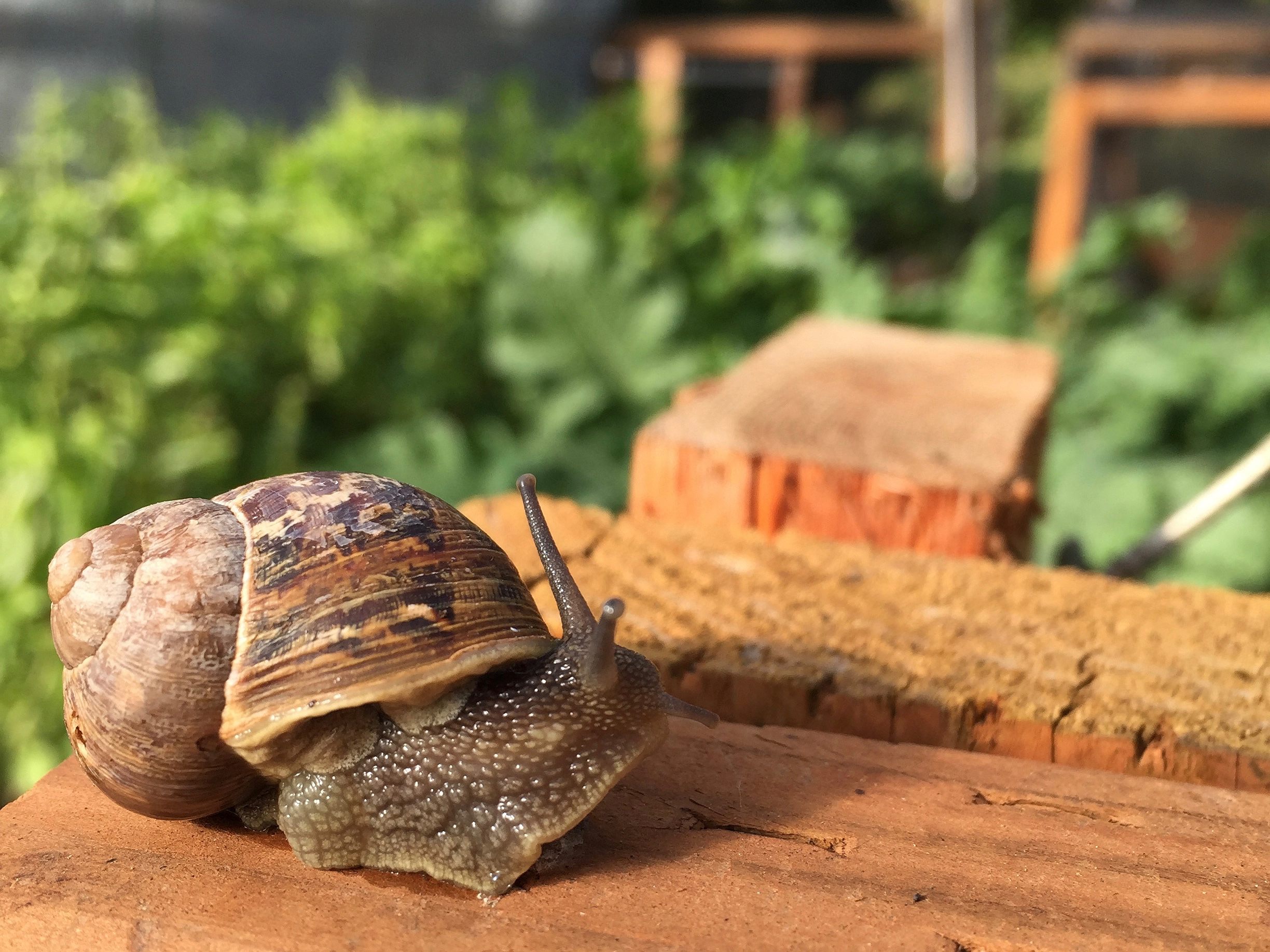
On weekdays, Ric Brewer lives in Seattle and works as a communications manager for a disaster-relief nonprofit. But most weekends, he heads to his five-acre spread in Quilcene, among the foothills leading to Olympic National Forest, to check on his livestock. In this temperate rain forest setting, nearly everything glows an intense green: the grass and Douglas fir and Oregon grape. It’s a good climate for his moisture-loving animals.
It doesn’t take more than weekend visits. As many a frustrated home gardener knows, snails can thrive without much loving care on our part.
Brewer is the owner of Little Gray Farms, named for his stock in trade, the common garden snail, or petit gris. It’s smaller, as the name implies, than the canned escargots that are supposedly French, though they’re more likely processed in France, not grown there. The petit gris is more tender and more palatable, American snail farmers will tell you, and requires less processing.
It’s also healthier for the planet and our bodies than most sources of farmed animal protein. A serving of 100 grams (about three and a half ounces) has only 90 calories, according to the USDA, and snails are lower in fat than salmon. They also require microscopic grazing range—Brewer uses only a half-acre of his property—and the carbon footprint is far lower than for most animals. There’s an exhaustive 2015 Italian study, published in the journal Agricultural Systems, to prove it.
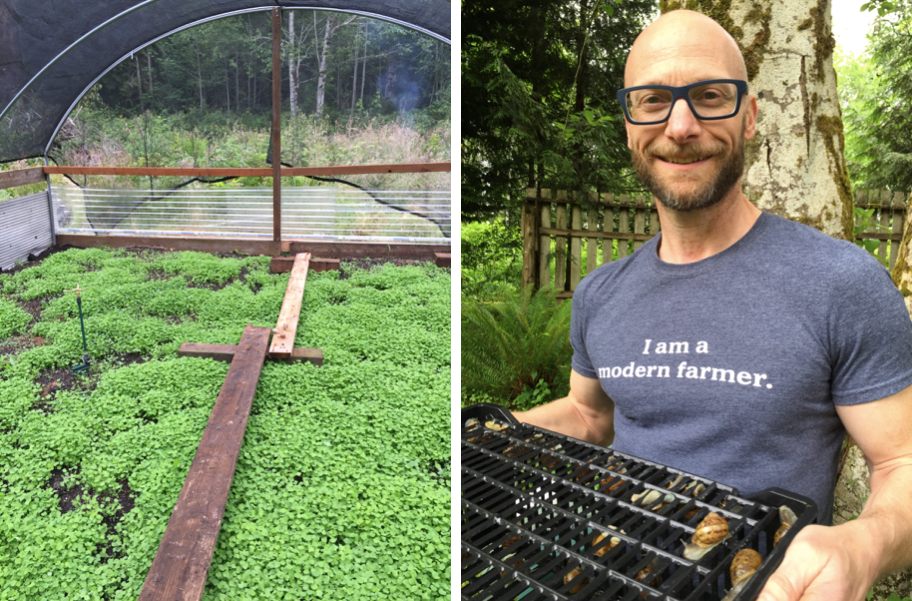
Maybe the best thing about snails as a food for Americans: Like edible weeds, common garden snails are an invasive species, found in about 20 states. Eating them is, in a way, doing a favor for the environment. In fact, Brewer got the idea for his farm after eating snails he’d foraged.
“I tasted my first one way back in high school, in 1981,” he says. His first cooking attempt with fresh snails—tossed in pasta with olive oil, oregano, and salt and pepper—was successful enough to keep him at it. “I was always kind of transfixed with them not only as a dish but as an animal.”
Snails are unusual for sure. They’re hermaphrodites who throw “love darts” (harpoon-shaped spears of calcium carbonate) at each other during their mating sessions. “They can spend about eight hours in courtship and mating,” Brewer says. “They twine around each other to match up the holes in the sides of their heads where their sex organs are.”
Another fascinating snail fact: Earlier this year, UCLA scientists wrote in the journal eNeuro that they had successfully transplanted primitive memories between snails—in a different species than the petit gris—through RNA injections. (Rather than a memory of a snow globe, think of an untrained snail suddenly acting like a trained one.)
At his farm, Brewer shelters the eggs indoors, raising the baby snails, which have shells from the start, until they’re large enough to live in an outdoor shadehouse. The structure is similar to a greenhouse, but with a woven cloth that rain and air can permeate, and perimeter fencing to thwart his snails’ escape attempts and attempts by rats and raccoons to feast on his crop. He feeds the snails organic vegetables that he grows, sharing his food with them. It takes them a year to mature fully. Then he purges them for a week by giving them only water—an important process done with clams too, which clears out their little digestive systems.

“They will eat almost anything,” Brewer says. “I’ve seen them in the wild eating dead baby birds.” Some snail farmers go for the more elegant term of “finishing” the snails; one New York operation uses malt barley, saying it improves the flavor.
Snail farming (and eating) is common in many parts of Europe, Africa, and Australia. In the United States, though, Brewer is one of just a handful of petit-gris pioneers, and he says this tasty, environmentally friendly trend is on ice due to a government-bureaucracy nightmare.
It’s this problem—and not a lack of interest from eaters—that’s chiefly kept snail farming niche. The “ew” factor that turned off many Americans a few decades ago has dissipated in a more globalized culture that seeks out the newest food thrills, especially those based in traditional cuisines. (Authentic Valencian paella, for example, frequently contains snails and rabbit.) Brewer and a handful of other snail wranglers have no problem finding customers among restaurants and private chefs, even though Brewer’s snails, boiled, shelled, and frozen, sell for about $50 a pound or two dollars a snail.
For one special customer in Seattle, he delivers live snails. Tarsan i Jane, owned by Perfecte and Alia Rocher, serves paella each Sunday. Often, that’s the snail-and-rabbit version that was part of Perfecte’s childhood in Valencia.
“By keeping your roots, you maintain some kind of integrity throughout the dish,” Alia says. A few customers’ eyebrows are raised when they read the ingredients, but they all seem happy in the end.
Still, growing Little Gray Farms into Bigger Gray Farms has proved more frustrating and expensive than Brewer ever imagined.
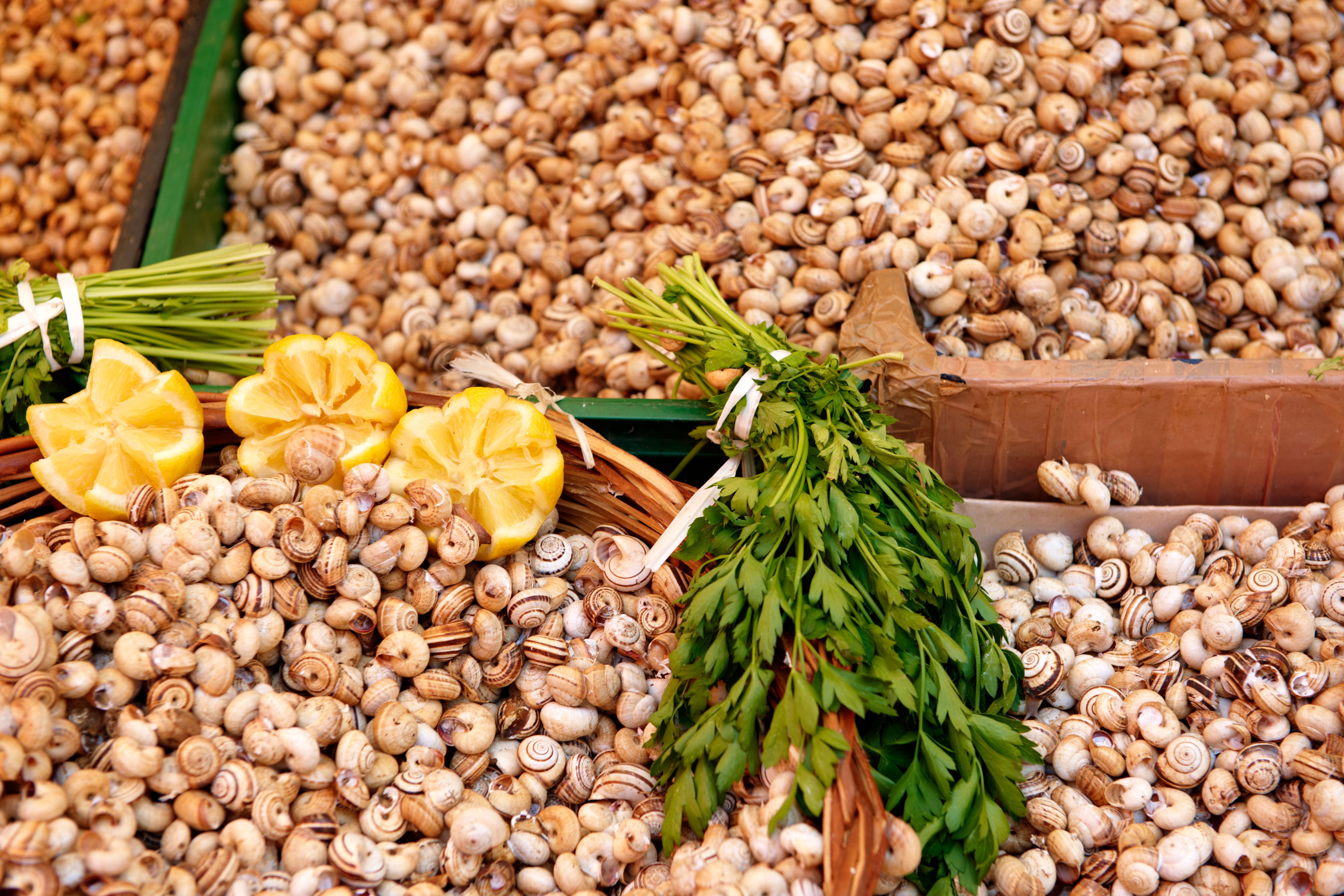
Because the snails are an agricultural pest, the U.S. Department of Agriculture tightly controls their interstate movement. Brewer can’t ship live snails even to a state that’s already infested. And when he needs more stock, he can’t have the animals shipped to him, even though the pests are established in Washington. He can’t just forage for snails on his property because they prefer groomed gardens and tilled fields. But right now, he can’t get his hands on the snails from places such as California, perhaps the snail capital of the U.S., that would love to get rid of them.
Still, Brewer is determined to make snail farming in America a thing. He’s created the Snail Raising Association of North America, an admittedly tiny trade group, to offer snail-husbandry advice, encourage others to take up gastropod wrangling, and advocate for looser restrictions. This isn’t anything like giant fields of corn, concentrated animal feeding operations, and other large agribusinesses that are better set up to absorb the costs of federal regulatory details and lobby for and receive government support. The USDA needs to think beyond common industrialized monocrops, Brewer says, and look to the foods of the future than can be sustainably raised by microbusinesses.
“In the right areas and with the proper safeguards, snails can be responsibly raised and a good source of nutrition,” he says. The snail isn’t native to Central Europe either, yet snail raising there is a profitable business for small-scale farmers. “While technically USDA will allow snail farming, the obstacles are expensive and unduly stringent.”
To comply with the federal government’s requirements, Brewer has built a fully contained indoor building so that he can receive snails from out of state. They have to be shipped in three containers: a box within a box within a box. The new building has only one door, with a vestibule before the snail area (think a space station airlock) to prevent escapes. Homeland Security required a six-foot-high fence around the building to discourage agricultural terrorism, he says, complete with “Keep Out” signs. Meeting all the rules is costing Brewer around $25,000.
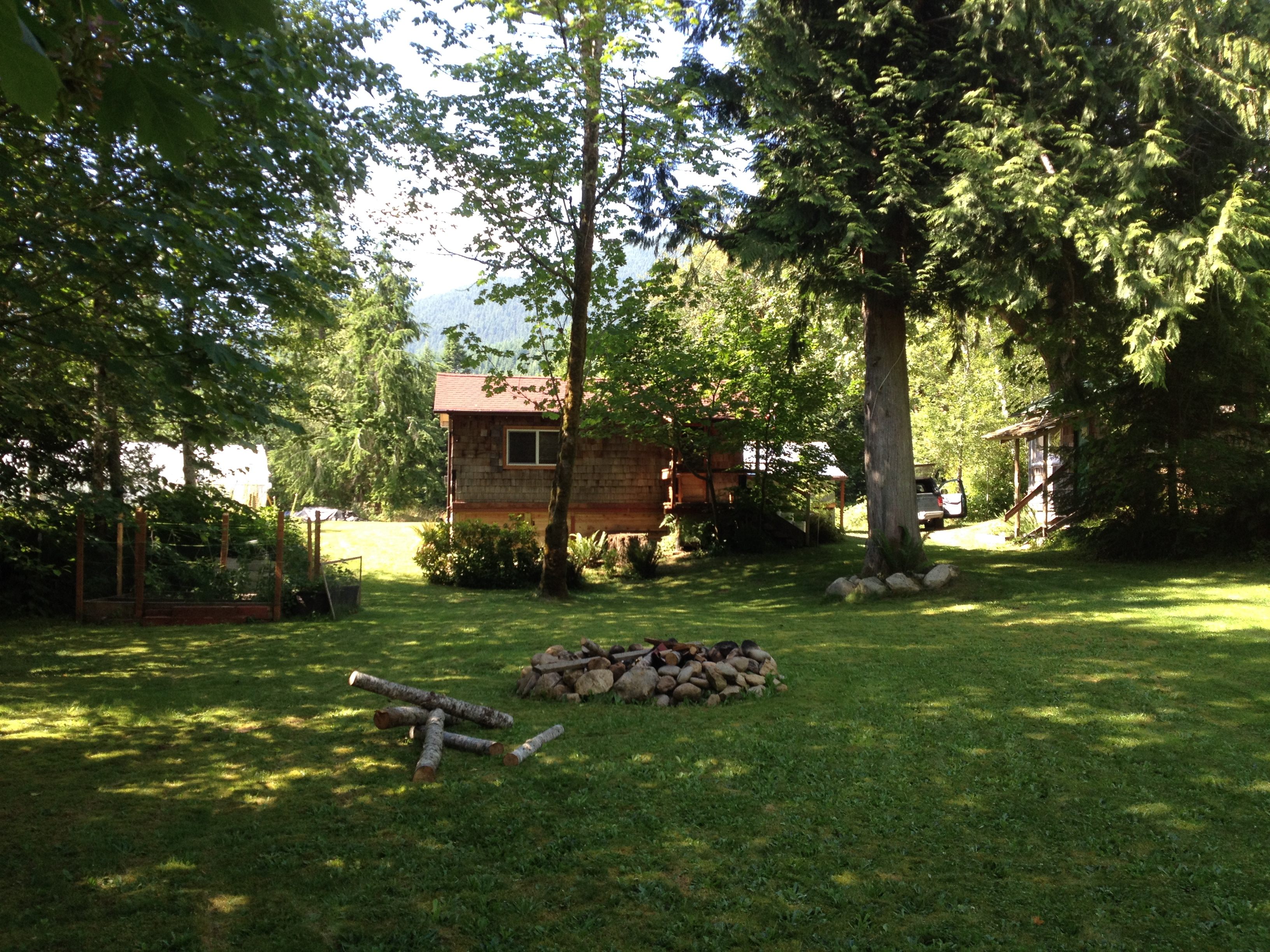
A USDA spokesman said the agency would respond to Brewer’s critiques, but despite repeated requests, it never did. That said, snail wrangler Frederick Dargenton, owner of SoCal Escargot, sympathizes with Brewer’s problems but doesn’t share them.
Dargenton lives in California, otherwise known as garden-snail heaven. California has the temperate climate snails need, and its vast, irrigated agricultural fields, along with well-watered suburban yards, provides moisture and a feast of edibles. The snails devour citrus and avocado trees, strawberries, you name it. So Dargenton doesn’t need to breed snails; he forages them from organic farms that want these pests removed.
By foraging locally, Dargenton’s business doesn’t need to ship in triple-boxed snails. And while he sells some frozen snails outside of California, living in a state of 40 million means the French former chef—who hates the big, rubbery, tinny flavored snails found canned in supermarkets—has plenty of local customers for his live mollusks.
In contrast, Brewer’s imported snails, once they arrive from distant origins, will spend their entire lives in his new building, a little like the Hotel California. They’ll breed there, and their offspring will know no environment beyond its walls. The only way they’re allowed to leave is by dying—and being transformed from marauding mollusk to sustainably raised protein for a new generation.
Gastro Obscura covers the world’s most wondrous food and drink.
Sign up for our regular newsletter.





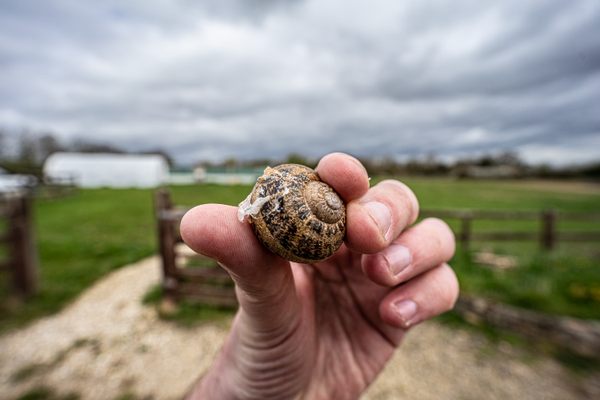




















Follow us on Twitter to get the latest on the world's hidden wonders.
Like us on Facebook to get the latest on the world's hidden wonders.
Follow us on Twitter Like us on Facebook